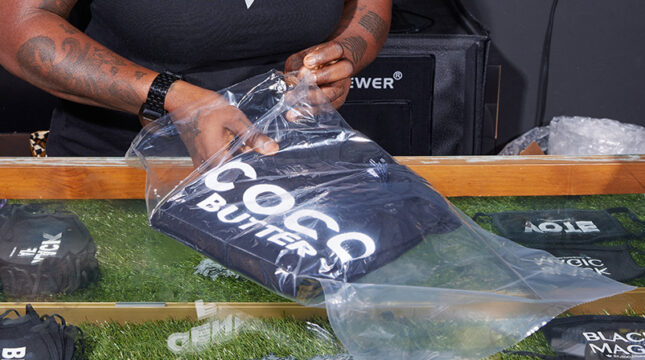Learning how to sell on Amazon can be one of the most profitable business decisions you make.
It takes work — it’s certainly not a source of passive income and the money doesn’t come in overnight. But you could see results quicker than you think when you learn how to become a seller on Amazon.
In this article we’ll share with you:
- The steps for selling on Amazon
- Tips to help your listing stand out
- Things you should know before selling
4 steps to selling on Amazon
Selling on Amazon is one of the best ways to get a product in front of a large audience. Here’s how to start selling on Amazon.
1. Choose your selling plan
Amazon offers two selling plans — professional and individual. You’re likely eligible for both plans, but choose the one that makes the most financial sense:
- The professional plan costs $39.99 a month. It’s a monthly subscription fee, so you pay the same no matter how much you sell.
- The individual plan doesn’t have a subscription fee. Instead, you’ll pay $0.99 every time you sell an item.
It doesn’t take many accounting tips to discover the professional plan makes more sense. Simple math tells you it’s worth it if you plan to sell more than 40 items a month.
The professional plan offers more than financial savings for large sellers. You also get many features the individual plan doesn’t include:
- Inventory management spreadsheets, reports and tools
- Set your own shipping rates
- Offer promotions and special listing features
- Opportunities to place your product as a “Featured Offer”
Keep in mind you’ll need to purchase Amazon seller insurance if you have a Pro Merchant account and your sales exceed $10,000 per month for three months in a row.
In 2020, Amazon added 200,000 new sellers from around the world, a 45% increase on the prior year (2019)
— The Most Surprising Stats From Amazon’s 2021 Small Business Empowerment Report, Forbes 2021
2. Sign up for an Amazon account
You need to have an active Amazon account to start selling on Amazon. If you already have an account, you’re a step ahead — however, branding is important. You may want to visit Amazon seller central to create a fresh account with a new business email.
The more cohesive you keep logos, emails and business information, the faster people will recognize your company.
To register for an Amazon seller account, you’ll need:
- Business name and address
- Telephone number
- Credit card and bank information
- Social Security number or business tax ID
When you start making sales, Amazon will deposit payments directly into your bank account.
A word on selling permits and business registration: Amazon doesn’t ask for a seller’s permit or business registration when you set up an account. But that doesn’t mean you’re off the hook — your state or local government could require it. Before you start your e-commerce sales business on Amazon, check regulations where you live to see if you need a permit or registration.
3. Pick your fulfillment method
Fulfillment is the process of storing, picking, packing and shipping products to customers. Amazon offers two options:
- Fulfillment by Amazon (FBA)
- Fulfillment by Merchant (FBM)
If you use FBA, you send your products to Amazon. They store the inventory until the items sell. Then, Amazon fulfills the order and ships your products. Amazon handles all administrative work, too — including returns.
Of course, Amazon FBA isn’t free. You’ll pay a fee per item sold that ranges from $2.16 to $138.11. The cost depends on the measurements and weight of the item.
Fulfillment by Merchant is exactly what it sounds like — you (the merchant) handle fulfillment, including picking, preparing the products to ship, and shipping the packages. You’re also responsible for customer service requests and returns.
4. Create attractive Amazon listings
Once you’ve set up your seller account, you’ll create Amazon listings for your products.
The listing — and using high-resolution images — is the most critical part of the storefront. Not only will it help buyers decide if they want your product or not, but it will help your products turn up in searches when you use proper keywords.
You have the option to list your items manually. If you have many things, you can upload a spreadsheet with details of each product to speed up the process.
Tips to make your listing stand out
Your job isn’t over once you create your Amazon storefront. Remember, there are thousands of others just like you vying for the same attention. Now, think about trying to stand out among those products.
It’s not an easy task, but here are some tips to help.
Include as many keywords as possible in the title without spamming
Amazon uses the title for ranking by keyword. Use your keywords strategically if you want your product to show up at the top of the listings.
Use bullet points to cover any keywords or information the title missed
You have a limited amount of space to create the title. To include more keywords in your listing, use bullet points for product features. The features are listed at the top of the listing and get noticed first.
Provide clear and attractive photos
Pictures sometimes sell more than words, so take great photos that do your product justice. You can include up to nine images, so take advantage.
Things you should know before you sell on Amazon
Up until this point, it seems like selling on Amazon is all sunshine and roses — and it can be. But there are things everyone should watch out for and know ahead of time because there are risks to e-commerce.
Not everyone makes it big selling on Amazon, and some sellers even get shut down overnight. Here’s what you should know:
- You can get revoked for negative reviews: Amazon holds its quality stipulations high. If you get a lot of negative reviews about the product quality in a short amount of time, they could restrict your account.
- You may have to cover the cost of return shipping: If a customer returns your product claiming it’s defective or is the wrong item, you may have to pay for the cost of return shipping.
- You may not have the final say on your pricing: Amazon constantly scours the internet to see what other sellers and sites are charging for the same or similar products. If they think you’re selling your products for an inflated price, they could force you to lower it.
- Any seller can become a featured seller: If you have a professional account, you have a chance to become a featured merchant, which typically means many more sales. It isn’t something you pay for. Instead, with a decent amount of sales and plenty of good reviews, you can be eligible for featured merchant status on Amazon.
- Good customer service is essential: If you choose FBM, make sure you deliver top-notch service. This means answering customer service inquiries immediately, handling returns quickly, and fixing problems customers bring to your attention.
You can also visit Amazon seller university to get resources to help you learn best practices for selling on Amazon.
For the period of September 2020 to August 2021, American sellers on the platform averaged $200,000 in sales. This is up from $175,000 in the prior 12 month period.
— The Most Surprising Stats From Amazon’s 2021 Small Business Empowerment Report, Forbes 2021
Is it worth it to sell on Amazon?
All of this begs the question — is it worth learning how to start selling on Amazon?
For the right person, the answer is a resounding yes! There is plenty of money to be made in e-commerce if you can stand out from the crowd, provide excellent customer service, and sell quality products.
Watch out for the pitfalls, know how to market, and continually brand yourself to increase your chances of becoming a successful Amazon storefront.
How NEXT helps budding e-commerce sellers
NEXT Insurance helps entrepreneurs get their e-commerce businesses started by fulfilling Amazon’s sellers insurance requirements for Pro Merchants.
If you need insurance for selling on Amazon, don’t pay for more than you need — our custom pricing tries to tailor your coverage to help make sure you’re not paying for coverage you don’t need.
In less than 10 minutes, you can apply online and get your certificate of insurance. Have questions? Our licensed U.S.-based insurance professionals are available to help.





